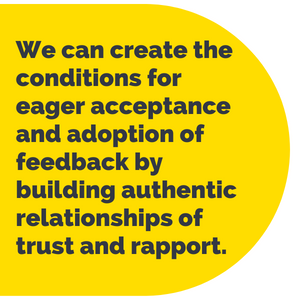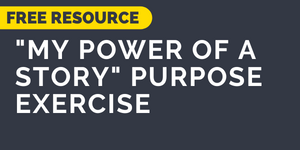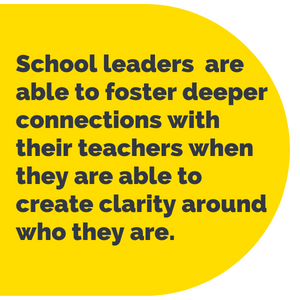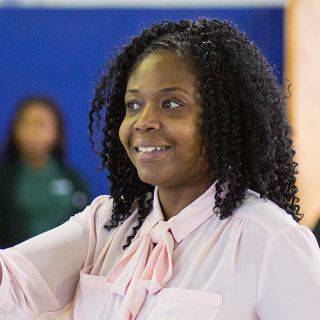“If you’re going to live, leave a legacy. Make a mark on the world that can’t be erased.” —Dr. Maya Angelou
I began my career at Uncommon Schools as a teacher. As part of my hiring process, I guest-taught a lesson. It didn’t go well. I knew it, and the hiring principal Michael Mann knew it.
But instead of many other potential outcomes, Mike asked me when I wanted to come back. He told me directly that my lesson wasn’t strong enough for our children, and he told me what needed to be improved, step by step. But he also made it clear that he saw something in me, and he invited me to try again. I went home, rewrote the lesson and practiced, and went back the next day.
From that first interaction, the message that I received was that I could do it, and I was worth this leader’s investment in developing my knowledge and skills. I went on to make it my mission to teach in, and later lead, the kind of school where I’d want my own children to learn and where I’d feel as valued as a teacher as I did that day.
As part of our dual-leader model, which includes both a Principal and Director of Operations at every campus, Uncommon Schools recruits and develops school leaders through Principal Fellowship and Operations Fellowship programs. As the leader of our Principal Fellowship, I’m constantly thinking about how we can better prepare aspiring school leaders to leave the kind of legacy Dr. Angelou describes — to leave a lasting impression that may very well change the course of someone’s life — and to inspire others to do the same.
Connecting with Our Purpose to Make Change
This year, we launched our Fellowship with an exercise that reflects my own early experience as a teacher, and that is simple and profound: connecting with our purpose. We asked our Principal Fellows to reflect on who they are, what they believe, and why they’ve chosen to commit themselves to our mission. Before getting to what that exercise revealed, I’d like to explain why connecting with purpose is so important for leaders.
Why Ask Why?

Through Uncommon Schools’ Principal Fellowship, aspiring leaders work full-time as a member of a school leadership team. They receive daily observation and feedback from their host principal, peer feedback from a fellow cohort member, real-time practice and feedback loops in monthly professional learning sessions, and monthly check-ins with me. That’s a LOT of feedback, and the Principal Fellows who go on to be highly effective leaders are those who can internalize and apply those opportunities for growth in their day-to-day practice.
How, then, do we create the conditions for eager acceptance and adoption of feedback, without which growth is inhibited? We do this by building authentic relationships of trust and rapport, which create the psychological safety individuals need to feel in order to receive feedback.
“My Power of a Story” Leadership Purpose Exercise
Several studies show that transparency and vulnerability are key factors that contribute to relationships of trust in the workplace. The ‘My Power of a Story” exercise, which I co-developed with Principal Denarius Frazier, prompts Principal Fellows to be clear about the life experiences that shaped the leaders they are today, the values they bring to their work, and the commitments they are making to work alongside their staff to achieve our shared mission. The exercise also requires Principal Fellows to be selectively vulnerable, storytelling from a place of deeply personal meaning.
Here’s exactly what Principal Fellows responded to in shaping their stories of purpose:
- How do you define your identity and your unique perspective on the world?

- Explain your connection to the mission and broader fight for equity in education.
- What are your commitments to the team? How will you support them?
- Ultimately, be unafraid of the brutal facts and realities of your truth.
After crafting their personal statements of purpose individually, Principal Fellows work collaboratively with their Host Principals to refine both the content and the presentation using this rubric as a guide. Then, they share their stories with their entire school teams.
Purpose Drives Powerful Impact
School leaders who are able to create clarity around who they are and the values that drive their thinking and decision-making are also able to foster deeper connections with their teachers. This creates a foundation for more challenging moments within those relationships, such as sharing or receiving feedback. Mariah Copeland, a Principal Fellow at Vailsburg Middle School, shared this reflection on the connections her personal storytelling helped make possible.
Overall, when delivering my “My Power of a Story,” I felt as though I captivated the audience by grounding them in my WHY. When rolling out my three core values of grit, perseverance, and “being seen,” it was clear that I was able to weave these aspects throughout my story because teachers were able to walk away with reflections that mirrored my core values. I heard takeaways such as “We need to be able to see students for who they are,” and “Like Ms. Copeland, I too never gave up and persevered through adversity, which led me here to Uncommon.” My story will always be mine to tell, but I can inspire even more effectively when my wording aligns to the core ideas.
Our Principal Fellowship prepares school leaders to develop and sustain relationships of trust and accountability that lead to learning and growth for entire school communities. By inspiring their teams with love, joy, and high expectations, they leave a legacy for generations to come.

Key learnings
- Teachers are more likely to feel trust and rapport with school leaders who are clear about who they are, what they believe, and why they are committed to success for all students
- Building trust and rapport creates a foundation for the exchange of meaningful feedback, which helps leaders, teachers, and students learn and grow
- An impactful way to build trust and rapport is by creating and sharing a personal statement of purpose, through an exercise like “My Power of a Story”
Click below for PDFs of all the resources referenced above:



